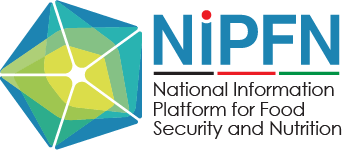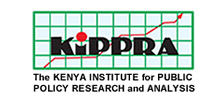Sustainable Development Goal (SDG)2 that aims to ‘‘end hunger, achieve food security and improved nutrition, and promote sustainable agriculture” and 12 of the 17 SDGs indicators address some aspect of nutrition. This reiterates the importance of synergised multisector actions in addressing malnutrition, including micronutrient deficiencies also called hidden hunger, since many sectors put interventions in place to attain these goals. Micronutrients are vital for healthy development, disease prevention and well- being and they are derived from diets except for vitamin D. Deficiency occur when people do not have access to micronutrient rich foods such as fruits, vegetables, animal products and fortified foods due to unavailability or being expensive if they are available. Deficiency cause a variety of morbidities and increased mortality often most severe in children and, adolescent girls and pregnant women. These groups have a relatively greater need for mineral and vitamins and more susceptible to the consequences of deficiencies. Deficiency can be due to food insecurity and inadequacy in availability of food. For these reasons among others, not all people are able to access adequate nutritious foods particularly children and suffer from anaemia, vitamin A, zinc, and iodine deficiencies that are problems of public health significance. Effective public health strategies such as dietary diversification and food fortification are needed to improve micronutrient intake in both younger and older children (Harika R. et al,2017).
Risk factors
The risk factors are low intake of animal source foods, low breastfeeding, low micronutrient density in complementary foods, increased physiological demands for growth during pregnancy and lactation, increased demand due to acute frequent infections or chronic diseases, malabsorption due to diarrhoea or infestation by intestinal parasites, food shortages or seasonality, some deprivation, illiteracy, low education, poor socio -economic status and poverty.
Proposed multisector interventions
Lancet series on maternal and child malnutrition highlighted the lack of quality evidence for and multisectoral inclusion of nutrition sensitive interventions as well as lack of incorporation of nutrition sensitive approaches such as water, sanitation and hygiene (WASH) agriculture and food security into existing nutrition specific programming (Lancet, 2013). The interventions in addressing this include increased dietary diversity, food fortification, supplementation and ,public health measures.
Public health measures include infection control, immunization, malaria, parasite control, improved water and sanitation, quality childcare practices and, nutrition education and awareness particularly to mothers and caregivers.
Fortification is the addition of micronutrients to processed foods. The forms of fortification are either mandatory, voluntary, and special voluntary fortification applied based on purpose and the target population.
Dietary diversification concerns how to ensure access to a quality and safe diet with adequate macro and micronutrients for everyone. Diversification has been proved to be cost effective in addressing micronutrient deficiencies in the population. Diversification as a strategy succeeds if integrated with principles of bioavailability, translated to efficient food synergies emphasising on food accessibility and affordability. Promoting an enabling environment and sustainable agriculture are crucial for practising diversification and behaviour change communication as central for adoption of appropriate dietary practices in sustainably improving nutrition.
Supplementations is availing of large doses of micronutrients and has been used in folic acid and iron to pregnant women, and vit A to infants, under 5 children and post -partum women. Owing to large amounts of micronutrients given at appoint in time, this requires control and there is evident poor compliance in taking the required amounts and sometimes there are lack of supplies.
Options for sustainable nutrition improvement
Sustainably addressing micronutrient deficiencies require enabling environment and sound policies that promote food production and ensuring stability of market prices to ensure protection of consumers from high prices that deprives them the right to access adequate nutritious foods. Policies of poverty alleviation and empowering communities to earn incomes from small scale investments and household food production will improve economic access to foods.
Public health measures need to be strengthened as they are cost effective. Learning from the covid-19 pandemic, knowledge on appropriate nutrition practices boosts the immunity of the body. Engaging communities with nutrition education, and mothers and caregivers on good childcare practices will improve nutrition. These nutrition education messages require to be integrated into service delivery initiatives of sectors with a role on nutrition.
In the covid-19 period, the hidden hunger is an area that is worthy interrogating to see if health systems efforts were diverted to response to the pandemic and forge a way forward on how to ensure consistency in interventions that sustainably improve the health of the population. This is important as good nutrition is critical in the prevention and control of deficiencies, infections, and diseases.
References
Harika R, Faber M,Samuel F, Mulugeta A, Kimiywe J&Eilander A,2017. Are low intakes and deficiencies in iron, Vitamin A, Zinc and iodine of public health concern in Ethiopian, Kenyan ,Nigerian and South African children and adolescents?
Lancet,2013. Maternal and Child nutrition study group: Executive summary f the Lancet maternal and child nutrition series.Lancet,2013,5(1):1-11









